Introduction of 21 winners of Las Cagis Farm in 2010 Columbia COE Competition
For professional baristas, please follow the coffee workshop (Wechat official account cafe_style)
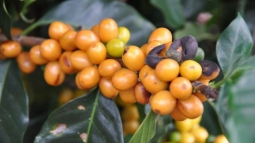
2010 Columbia COE National Coffee Competition 21st Las Cochas Las Cadges Farm Award batch
Colombia is currently the third largest coffee producer in the world, originally second only to Brazil, but in recent years Vietnamese coffee, which specializes in the production of Robusta stout beans, has surpassed Colombia's runner-up status. Colombia first planted so-called commercial beans in the mid-1830s. Coffee beans accounted for the largest share of export crops in the 20th century. The local mountainous terrain, coupled with a variety of tropical microclimate, provides an ideal environment for coffee cultivation. The national planting area is about 875000 hectares. The main varieties include Kaddura Caturra, Colombia Colombia, Tibica Tipica, bourbon Bourbon, Elephant Bean Maragogype, and Tabi. Farms and cooperatives across the country, big or small, are distributed in more than 500000 towns and 14 major coffee producing areas-including Nalinglong Nari ñ o, Cauca in Cauca, Meta in Mehta, Huila in Uila, Tolima in Tolima, Quindio in Kindio, Caldas in Caldas, Risaralda in Lisalda, Antioquia in Antioquia, Valle in Valley, Cundinamarca in Cundinamaka, Boyac á in Boyaca. Santander in Santander province and Norte de Santander in northern Santander province. A total of 2 million Colombians depend on coffee cultivation for their livelihood, contributing 12.5 per cent to the gross domestic product of local agriculture, while 75 per cent of coffee bean production is sold abroad, making it the main source of Colombia's foreign exchange earnings.
Traditionally ripe coffee cherries are washed, although the Coffee Research Center in Colombia has developed a system to protect the ecological environment in the past 15 years, which requires little water and can reduce local water pollution by 90%. And reduce water consumption by 95%. This drying method can not only effectively maintain the ecology, but also ensure the stable quality of coffee, which is unique in Colombia. Farmers on small farms sprinkle shell beans on the flat roof of their homes to dry in the sun, or use plastic sheds if they are at higher elevations and the climate is colder. Colombia is so rich in climate temperature diversity that coffee can be grown and produced almost all year round. The main harvest time is from October of each year to February of the following year, and November and December are harvest periods. The second harvest period is relatively late, which varies according to the microclimate of each producing area.
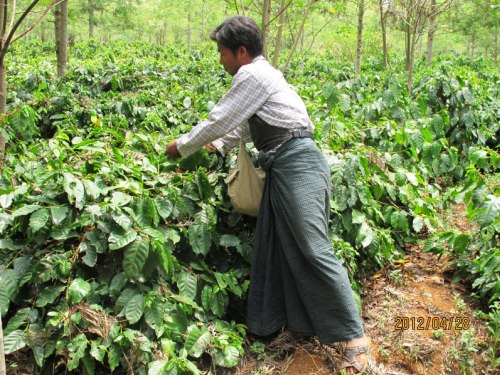
The owner of the farm, 64 years old, was born in Samaniego city, Shamanigo, Nalingo Nari ñ o. The farm is run by his wife and children. As it is a family farm, Mr. Melo works very hard to make progress, hoping to give his children and grandchildren a good education and teach them the skills they depend on to continuously improve the family's living conditions.
Las Cochas Las Kajes Farm, 12 kilometers from Samaniego city in Shamanigo, is protected by local plants and is a traditional farm where coffee beans are treated with traditional equipment and dried in the natural sun. Farm owners are very active in community-organized activities, actively participate in seminars on social care or coffee-related skills, and spare no effort to protect the local forest and environment.
Property Characteristics: farm characteristics
Farm Farm name: Las Cochas
Farmer Farm owner: Melo
Rank Rank: 21
City City: Samaniego Shamanigo
Region producing area: Nari ñ o Na Linglong Province
Country countries: Colombia Colombia
Farm Size Farm area: 9.60 Hectares ha
Coffee growing area Coffee planting area: 2.60 Hectares ha
Altitude altitude: 2080 m
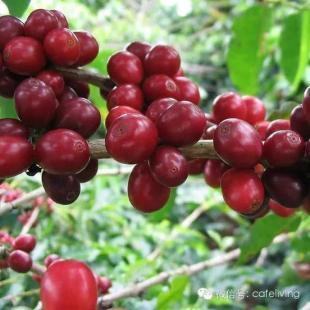
Certification certification: None none
Coffee Characteristics: coffee characteristics
Winning Bidder winning bidder:
Mercanta The Coffee Hunters for K é an Coffee (USA)
The British raw bean merchants, who led the direct coffee auction at COE International Coffee auction in 2010, also recruited those responsible for bidding, coordination and distribution.
, Kaffeespezialit ä t (AT), Rocket Coffee (NZ), Grumpy Mule Distinctive Coffees (UK), re Kafferosteri (SE), Dutch Barista Coffee (NL), Has Bean Coffee (UK)
Giuli Co.Ltd. (TW) Direct Coffee distributed to 4 boxes of 60kg is the 21st prize bean in 2010, and is the only roaster in Taiwan to buy this batch of coffee.
Java Coffee (PL), Kult-Kaffee R ö sterei (DE), The Golden Coffee Box (NL)
Top Jury Descriptions judge's comment: the baking degree measured by the cup for 60 seconds at the beginning of the first explosion (Cinnamon)
Aroma aroma / flavor flavor: honey, chocolate, citrus, melon, caramel, plum, raisin
Acid: lemon, tartaric acid, grapefruit
The complexity of complex is similar to that of other: the palate is supple, creamy and mellow, and the finish is long-lasting, sweet and cool.
Cup test date: 2011.05.23
Dry aroma: 9
Wet aroma: 8
Clean: 8
Brightness: 8
Palate: 9
Balance: 9
Complexity: 7
Sweetness: 9
Acid quality: 8
Yu Yun: 10
Cup test score: 85
Important Notice :
前街咖啡 FrontStreet Coffee has moved to new addredd:
FrontStreet Coffee Address: 315,Donghua East Road,GuangZhou
Tel:020 38364473
- Prev
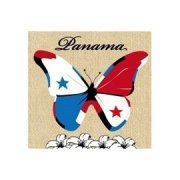
General situation of Pokui specialty area in Panama introduction to siphon cooking and drinking method of flower butterfly coffee beans
For the exchange of professional baristas, please follow the coffee workshop (Wechat official account cafe_style) □ according to literature records, Panamanian coffee cultivation began around 1780 European immigrants introduced the first Typica tree species. Because Panama has sufficient sunshine, fertile land, alpine ecology and other advantages, coupled with a sufficient working population, Panama has become a representative of the production of high-quality and delicate coffee.
- Next
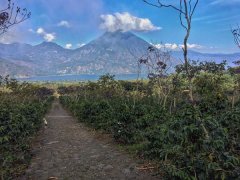
The largest coffee cooperative in Costa Rica-Tarazu Cooperative Costa Rican Coffee hand
Professional barista communication please pay attention to the coffee workshop (Wechat official account cafe_style) Costa Rica Tarazu Cooperative washing quality stable flavor good Costa Rica medium and deep baking water washing treatment uses the traditional washing method to treat raw beans, flows through the Rio Pirris River next to the treatment plant, abundant and clean water just provides good conditions for water washing treatment.
Related
- Detailed explanation of Jadeite planting Land in Panamanian Jadeite Manor introduction to the grading system of Jadeite competitive bidding, Red bid, Green bid and Rose Summer
- Story of Coffee planting in Brenka region of Costa Rica Stonehenge Manor anaerobic heavy honey treatment of flavor mouth
- What's on the barrel of Blue Mountain Coffee beans?
- Can American coffee also pull flowers? How to use hot American style to pull out a good-looking pattern?
- Can you make a cold extract with coffee beans? What is the right proportion for cold-extracted coffee formula?
- Indonesian PWN Gold Mandrine Coffee Origin Features Flavor How to Chong? Mandolin coffee is American.
- A brief introduction to the flavor characteristics of Brazilian yellow bourbon coffee beans
- What is the effect of different water quality on the flavor of cold-extracted coffee? What kind of water is best for brewing coffee?
- Why do you think of Rose Summer whenever you mention Panamanian coffee?
- Introduction to the characteristics of authentic blue mountain coffee bean producing areas? What is the CIB Coffee Authority in Jamaica?

